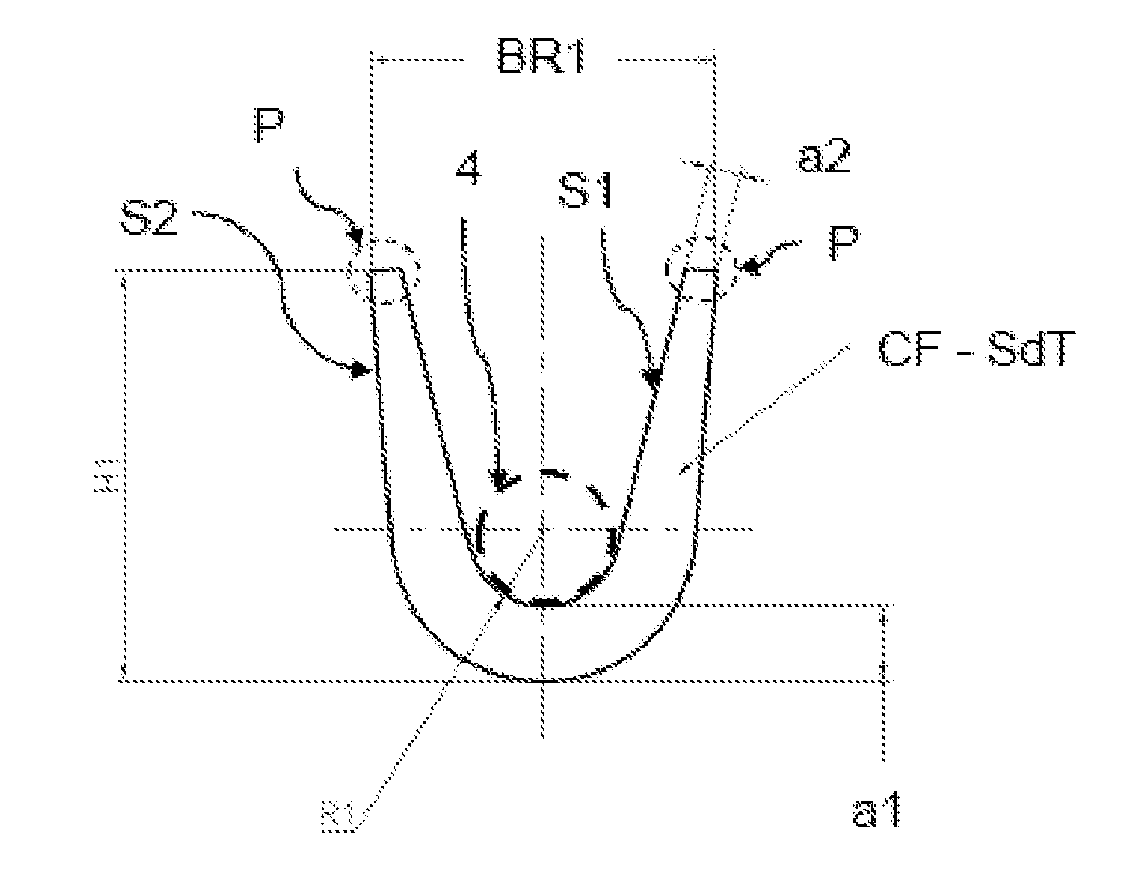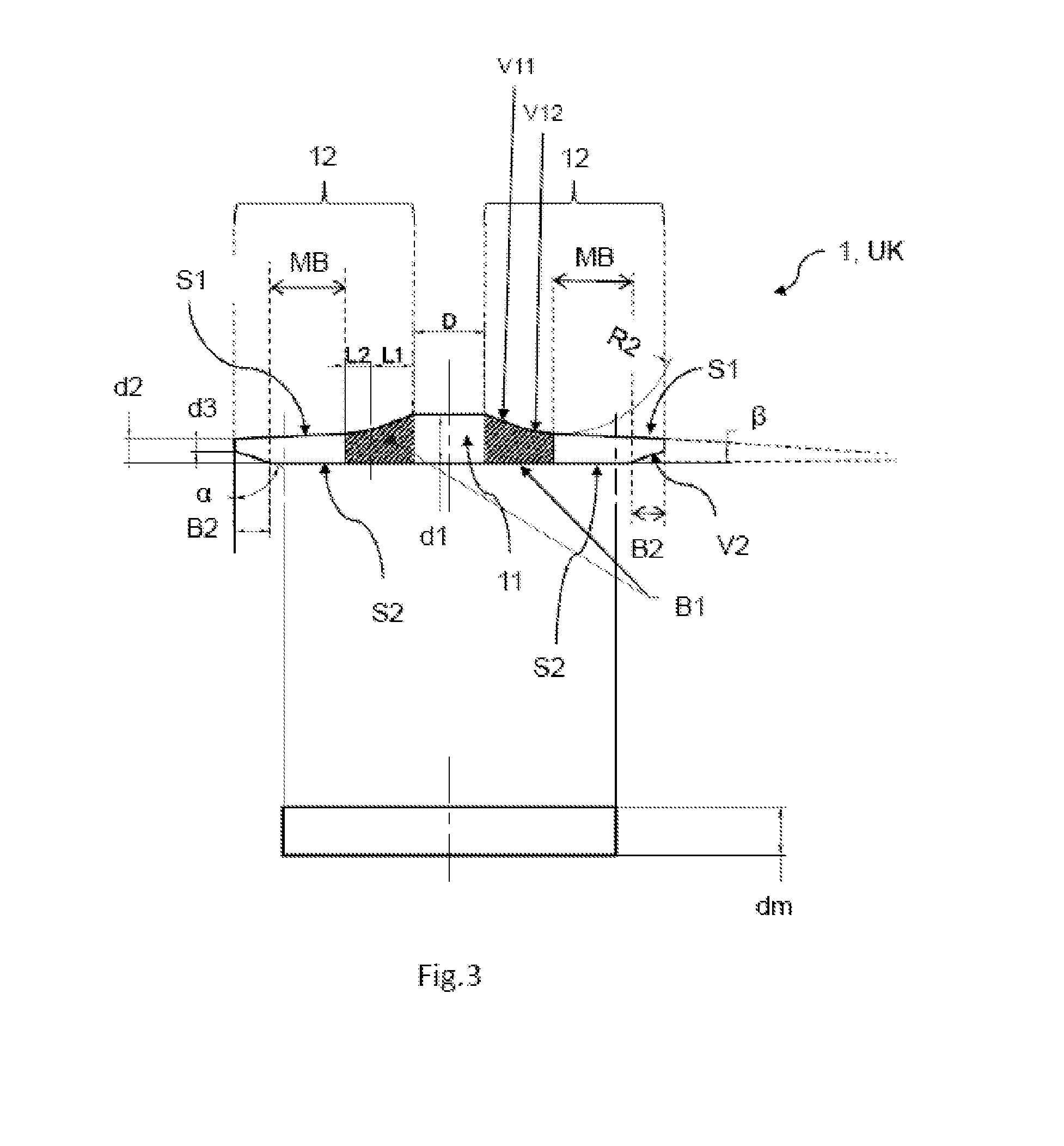Crimping Sleeve for Crimped Connections
- Summary
- Abstract
- Description
- Claims
- Application Information
AI Technical Summary
Benefits of technology
Problems solved by technology
Method used
Image
Examples
Embodiment Construction
[0027]FIG. 1 shows a crimp barrel (CF-SdT) in a pre-bent shape in a side view (sectional view perpendicular to the later wire direction in the crimped connection) according to the state of the art. The pre-bent shape (crimp shape CF) is in the form of a “V” with a curved base and crimping wings facing upward that are at a maximum distance BR1 from each other, namely, the width of the crimp shape CF. The radius of curvature R1 of the curved base is dimensioned in such a way that a wire 4 having a certain cross section can be laid into the curved base. In order to achieve a radius of curvature R1 that is suitable for the wire 4, the base has to have a thickness a1. The crimp barrel has a first side S1 that faces the wire when the crimped connection has been made, and a second side S2 that is the side of the crimp barrel that is opposite from S1. The tips of the crimping wings P have a thickness a2 that is smaller than the thickness a1, so that the crimping wings can roll up during the...
PUM
 Login to View More
Login to View More Abstract
Description
Claims
Application Information
 Login to View More
Login to View More - Generate Ideas
- Intellectual Property
- Life Sciences
- Materials
- Tech Scout
- Unparalleled Data Quality
- Higher Quality Content
- 60% Fewer Hallucinations
Browse by: Latest US Patents, China's latest patents, Technical Efficacy Thesaurus, Application Domain, Technology Topic, Popular Technical Reports.
© 2025 PatSnap. All rights reserved.Legal|Privacy policy|Modern Slavery Act Transparency Statement|Sitemap|About US| Contact US: help@patsnap.com



